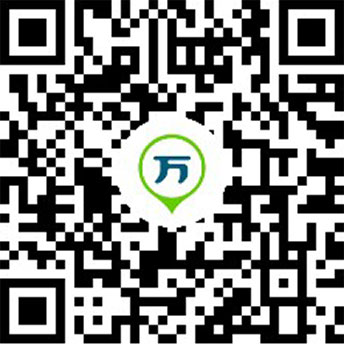Part I Reading Comprehension (共20小題,每小題2分,共40分)
Directions: In this part there are four passages. Each passage is followed by four comprehension questions. Read the passage and answer the questions. Then mark your answer on the Answer Sheet.
Passage One
Questions 1 to 5 are based on the following passage:
Animals react to the changing seasons with changes in mood and behavior and human beings are no exception. Most people find they eat and sleep slightly more in winter and dislike the dark mornings and short days. For some, however, symptoms (癥狀) are severe enough to damage their lives and to cause considerable stress. These people are suffering from SAD. The symptoms tend to start from around September each year lasting until April, but are at their worst in the darkest months.
The standard figure says that around 2% of people in Northern Europe suffer badly, with many more (10%) putting up with milder symptoms. Across the world the incidence (發生率) increases with distance from the equator (赤道), except where there is snow on the ground, when it becomes less common. More women than men are found having SAD. Children and young people can also suffer from it.
The problem stems from the lack of bright light in winter. Researchers have proved that bright light makes a difference to the brain chemistry, although the exact means by which sufferers are affected is not yet known.
As the cause is lack of bright light, the treatment is to be in bright light every day by using a lightbox or a similar bright treatment. (Going to a brightly-lit climate, whether skiing or somewhere hot, is indeed a cure). The preferred level of light is about as bright as a spring morning on a clear day and for most people sitting in front of a lightbox, allowing the light to reach the eyes, for between 15 and 45 minutes daily will be sufficient to alleviate the symptoms. The user does not have to stare at the light, but can watch TV or read a book, just allowing the light to reach the eyes. OUTSIDE IN have a complete range of suitable lights, all in line with the research findings from medical and academic facilities. They are all available on our pioneering HOME TRIAL SYSTEM.
1. What happens to SAD patients, according to the passage?
A、They eat more and sleep less.
B、They are cheerless and worried.
C、They react to the changing seasons.
D、They dislike long days with dark mornings.
2. In which month do SAD symptoms become worst?
A、December.
B、September.
C、April.
D、February.
3. Which of the following statements is false according to the passage?
A、Going skiing is one of the good cures for SAD.
B、The percentage of SAD sufferers is high in North Europe.
C、Doctors now know how lack of bright light causes SAD.
D、People of all ages and both sexes may suffer from SAD.
4. What does the word “alleviate” (Paragraph 4) most probably mean?
A、“cause”
B、“produce”
C、“show”
D、“reduce”
5. What does the last paragraph mainly talk about?
A、Why people suffer from SAD.
B、How SAD patients can be treated.
C、How long an SAD treatment lasts.
D、Where people can go for SAD treatment.
Passage Two
Questions 6 to 10 are based on the following passage:
Increasingly, over the past ten years, people – especially young people – have become aware of the need to change their eating habits, because much of the food they eat, particularly processed foods, is not good for the health. Consequently, there has been a growing interest in natural foods.
Natural foods, for example, are vegetable, fruit and grain which have been grown in soil that is rich in organic (有機的) matter, in simple terms, this means that the soil has been nourished (滋養) by unused vegetable matter, which provides it with essential vitamins (維生素) and minerals. This in itself is a natural process compared with the use of chemicals and fertilizers, the main purpose of which is to increase the quantity – but not the quality – of foods grown in commercial farming areas.
Natural foods also include animals which have been allowed to feed and move freely in healthy farms. Compare this with what happens in the mass production of poultry: there are battery farms, for example, where thousands of chickens live crowded together in one building and are fed on food which is little better than rubbish. Chickens kept in this way are not only tasteless as food; they also produce eggs which lack important vitamins.
There are other aspects of healthy eating which are now receiving increasing attention from experts on diet. Take, for example, the question of sugar. This is actually a non-essential food. Although a natural alternative, such as honey, can be used to sweeten food if this is necessary, we can in fact do without it. It is not that sugar is harmful in itself. But the problem is that the quantity we use has grown steadily over the last two centuries and in Britain today each person consumes an average of 200 pounds a year! Yet all it does is provide us with energy, in the form of calories. There are no vitamins in it, no minerals, and no fiber.
6. Why do people now prefer natural foods?
A、Because they grow fast and cost less.
B、Because they fit people’s eating habits.
C、Because they are good to people’s health.
D、Because they are simply processed foods.
7. Which of the following is true according to Paragraph 2?
A、Fertilizers are important in growing natural foods.
B、Soil for natural foods usually lacks organic matter.
C、Natural foods are grown in commercial farming areas.
D、Chemicals are used to increase the quantity of foods grown.
8. What is the writer’s attitude towards chickens fed on battery farms?
A、Supportive.
B、Doubtful.
C、Hopeful.
D、Negative.
9. What is the most important point the writer wants to make about sugar?
A、People use it to sweeten food.
B、It gives us much-needed energy.
C、People take too much of it.
D、It is actually a kind of honey.
10. Which of the following is closest in meaning to the word “diet” (Paragraph 4)?
A、“food”
B、“rice”
C、“animals”
D、“agriculture”
90. Health is the key of happiness. Only healthy people can enjoy their lives.
Passage Three
Questions11 to 15 are based on the following passage:
Friends play an important part in our lives, and although we may take the friendship for granted, we often don’t clearly understand how we make friends. While we get on well with a number of people, we are usually friends with only a very few – for example, the average among students is about 6 per person. In all the cases of friendly relationships, two people like one another and enjoy being together, but beyond that, the degree of intimacy between them and the reasons for their shared interest vary enormously. As we get to know people we take into account things like age, race, economic condition, social position, and intelligence. Although these factors are not of prime importance, it is more difficult to get on with people when there is a marked difference in age and background.
Some friendly relationships can be kept on argument and discussion, but it is usual for close friends to have similar ideas and beliefs, to have attitudes and interests in common – they often talk about “being on the same wavelength”. It generally takes time to reach this point. And the more intimately involved people become, the more they rely on one another. People want to do friends favors and hate to break a promise. Equally, friends have to learn to put up with annoying habits and to tolerate differences of opinion.
In contrast with marriage, there are no friendship ceremonies to strengthen the association between two people. But the supporting and understanding of each other that results from shared experiences and emotions does seem to create a powerful bond, which can overcome differences in background, and break down barriers of age, class or race.
11. What does the passage say about making friends?
A、People usually have fewer friends than they think.
B、People do not have to like each other to become friends.
C、People become friends when they get on well with each other.
D、People consider age and background unimportant in making friends.
12. Which of the following statements is true according to Paragraph 2?
A、Tolerance is vital to friendship.
B、Friends are usually interdependent.
C、Friends do not rely financially on each other.
D、Annoying habits are worse than promise breaking.
13. What does the passage imply about marriage?
A、There is no friendship involved in it.
B、There is usually a special occasion for it.
C、 It requires shared experiences and emotions.
D、It is a much closer relationship than friendship.
14. Which of the following contributes to friendship the most?
A、Similarities in class and race.
B、Similarities in age and background.
C、 Similarities in habits and beliefs.
D、Similarities in opinion and feelings.
15. Which of the following is the best title for the passage?
A、Friends and Friendship
B、Marriage and Friendship
C、Benefits from Friends
D、The Art of Making Friends
相關推薦:
- 培訓課程
- 更多課程報名入口>>
| 美好明天 在線課程 |
科目 | 主講 老師 |
直播 試聽課 |
教材 精講班 教材精講班 15課時
(1)對教材中所有知識點進行系統講解 (2)根據近年考試規律對知識點進行重要程度標注(必考/常考/可考或1星/2星/3星等,不同科目略有差異) (3)核心知識點配備模擬題和歷年真題進行實戰練習 |
重要考點 密訓班 重要考點密訓班 5課時
(1)總結、提煉重要、核心必考考點,剔除非重要考點 (2)配套密訓試題,將考點變考分 |
VIP密訓 密卷班 教學時長:3課時
(1)逐題精講3套核心試卷,列出涉及考點,學會利用知識點答題 預測考試重點方向,鞏固答題技巧 強化解題思維 構建成套解題思維 (2)歷年真題題庫:逐題配備文字、視頻解析,了解最新命題趨勢,實戰訓練鞏固知識點 |
考前5頁 A4紙 考前5頁A4紙密押:核心必考點精華集合,
5星重要,是老師們嘔心瀝血總結出來的, 全部背會,確定再次提分,你懂得! |
報名 |
|---|---|---|---|---|---|---|---|---|
 下載 下載 |
 下載 下載 |
 下載 下載 |
 下載 下載 |
|||||
| 課程安排 | 15課時/科 | 5課時/科 | 3套卷/科 | 5頁紙/科 | ||||
| 專升本 | 政治 | 大雄 | 報名 | |||||
| 英語(專升本) | Oriana | 報名 | ||||||
| 高等數學(一) | 開耕 | 報名 | ||||||
| 高等數學(二) | 開耕 | 報名 | ||||||
| 民法 | 肖瀟 | 報名 | ||||||
| 大學語文 | 小元 | 報名 | ||||||
| 教育理論 | 五月 | 報名 | ||||||
| 醫學綜合 | 夢茹,鴻儒 | 報名 | ||||||
| 藝術概論 | 猗猗 | 報名 | ||||||
| 高起點專本 | 語文 | 小元 | 報名 | |||||
| 英語(高起點) | Oriana | 報名 | ||||||
| 數學(理) | 開耕 | 報名 | ||||||
| 數學(文) | 開耕 | 報名 |
在線課程 |
AI私塾班
56%學員選擇 |
簽約保障班
38%學員選擇 |
基礎提升班
6%學員選擇 |
||
| 適合學員 | ①零基礎/多次考試未通過 ②需要全面系統學習 ③自學能力不足/喜歡陪伴式學習(需要全程督學/希望名師領學的學員) ④希望一次順利錄取 |
①首次報考/往年裸考 ②備考時間緊張/答題無思路 ③需要快速提分和高效掌握考試重難點的學員 ④實務較弱,需要提升做題能力 |
①自學能力強 ②能根據老師講課內容自主總結考試重點 |
||
|---|---|---|---|---|---|
在線課程 |
AI私塾班
56%學員選擇 |
簽約保障班
38%學員選擇 |
基礎提升班
6%學員選擇 |
||
| 適合學員 | ①零基礎/多次考試未通過 ②需要全面系統學習 ③自學能力不足/喜歡陪伴式學習(需要全程督學/希望名師領學的學員) ④希望一次順利錄取 |
①首次報考/往年裸考 ②備考時間緊張/答題無思路 ③需要快速提分和高效掌握考試重難點的學員 ④實務較弱,需要提升做題能力 |
①自學能力強 ②能根據老師講課內容自主總結考試重點 |
||
|---|---|---|---|---|---|
| VIP三位一體課程體系 | 學 | 教材精講班 | |||
| 重要考點密訓班 | |||||
| 練 | VIP密訓密卷班 | ||||
| 背 | 考前5頁A4紙 | ||||
| VIP旗艦服務 | 人工助學服務 | 班主任微信1對1 | |||
| 授課老師微信1對1 | |||||
| 節點嚴控 | 考試倒計時提醒 | ||||
| VIP直播日歷 | |||||
| 上課提醒 | |||||
| 便捷系統 | 課程視頻、音頻、講義下載 | ||||
| 手機、平板、電腦多平臺聽課 | |||||
| 無限次離線回放 | |||||
| VIP配套資料 | 電子資料 | 課程講義 | |||
| 3年真題集錦 | |||||
| 考前5頁紙 | |||||
| VIP配套保障 | 1年有效期! 有效期結束,未達到錄取線申請退費或終身免費學! |
1年有效期! 有效期結束,考試不過科目免費重學1年! |
1年有效期! | ||
| 套餐價格 | 全科:¥3980 | 全科:¥2680 單科:¥980 |
全科:¥1680全科 單科:¥580 |
||
·2021年成人高考《高等數學》全真模擬題及答案(12) (2021-1-28 10:06:22)
·2021年成人高考《高等數學》全真模擬題及答案(11) (2021-1-28 10:05:14)
·2021年成人高考《高等數學》全真模擬題及答案(10) (2021-1-28 10:05:54)
·2021年成人高考《高等數學》全真模擬題及答案(9) (2021-1-28 10:02:22)
·2021年成人高考《高等數學》全真模擬題及答案(4) (2021-1-22 17:04:11)
·免費真題 ·模考試題


實用文檔 | 入黨資料 | 入黨申請書 | 入黨志愿書 | 個人自傳 | 轉正申請書 | 思想匯報 | 個人簡歷 | 簡歷模板 | 簡歷封面 | 工作計劃 | 工作總結 | 自我評測
個性評測 | 社交評測 | 事業評測 | 運勢評測 | 報告 | 實習報告 | 工作總結 | 社會實踐 | 心得體會 | 述職報告 | 調查報告 | 辭職報告
法律文書 | 合同范本 | 演講范文 | 更多>>
英語學習 | 聽力口語 | 閱讀寫作 | 翻譯文化 | 趣味英語 | 學習方法 | 英文經典歌曲 | 每日課堂 | 空中英語 | 少兒英語 | 影視英語 | 英文歌曲 | 更多>>
作文大全 | 作文 | 小學 | 初中 | 高中 | 話題作文 | 考研 | 四六級 趣味作文 | 體裁作文 | 記敘文 | 議論文 說明文 | 應用文 | 讀后感 | 作文素材 | 名言警句
優美段落 | 哲理故事 | 詩詞賞析 | 成語知識 | 技巧 | 寫作指導 | 作文點評 | 佳文賞析 | 寫作基礎 | 話題演練 | 作文教學 | 更多>>





